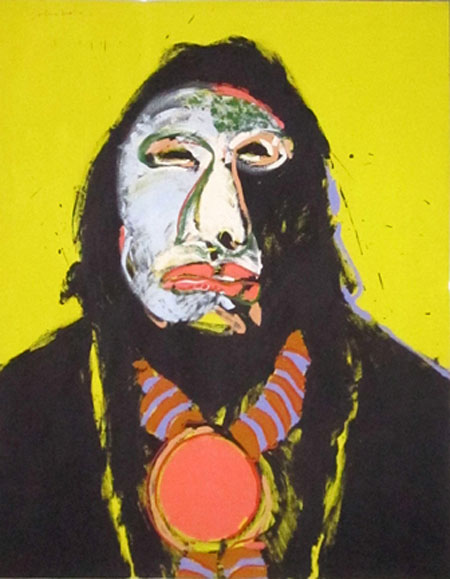
Continuing through April 30, 2012
Always challenging cultural stereotypes, Fritz Scholder redefined Native American art in the 1960s and ‘70s with brightly colored, postmodern images of “real Indians” garbed in traditional dress yet posing with ironic objects or bearing faces rendered with thick, smudged brushstrokes. The backgrounds are characteristically fields of pink, orange or yellow. Works from the ‘70s such as “Indian with White Face” and “Insane Indian #26” are among Scholder's strongest statements.
As a professor and a painter, Scholder was a great mentor to Native American artists - coaxing them to experiment with Abstract Expressionism and Pop Art - and is often referred to as the father of the New Indian Art Movement in the Southwest. A well-traveled man, he gained international renown, then settled in Scottsdale in his later years until his death in 2005.
Several dozen of the works on display celebrate the breadth and depth of Scholder, whose heritage is one-quarter Luiseno. The large, purposely garish acrylic portraits that are pure Scholder share space with equally famous lithographs, as well as more recent florals and a little-seen bronze called “Painted Man.”
“Shaman on the Beach” (1981) is a majestic 80 by 68 inch canvas in which a shadowy, broad-shouldered figure emerges on a pink beach. The lithograph “Indian Cliche, State 2” (1978) is a sunset scene with the silhouette of an Indian horseman in an almost-supplicating pose.
For a non-Indian theme, there is “Not Alone #11” (2001), a painting of a modern couple in close embrace, legs entwined, as if they are one. As in so many other pieces, there is an edginess to the work, a confidence with color and brushstrokes, that wonderfully identifies the artist's signature style.
